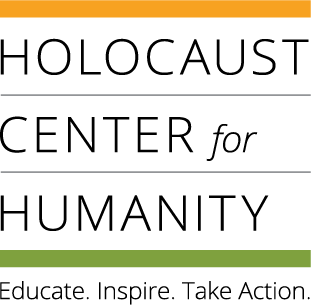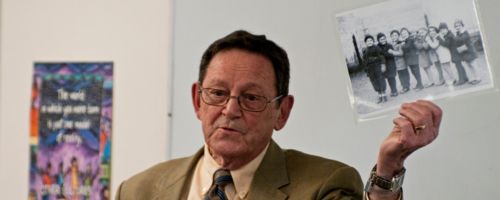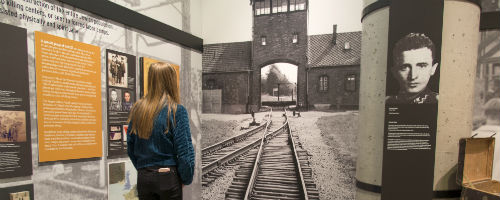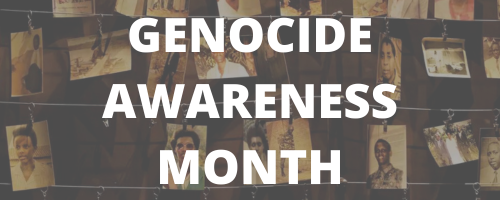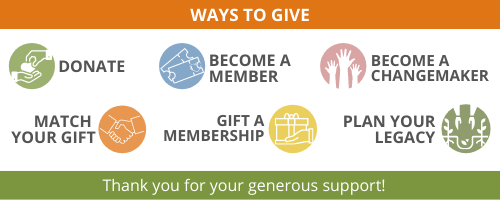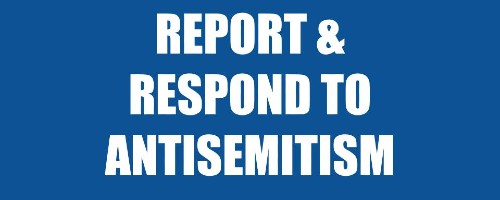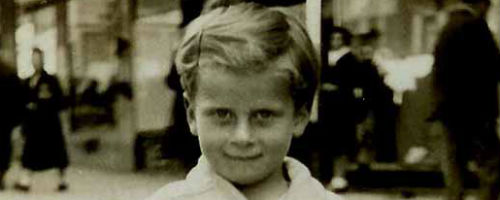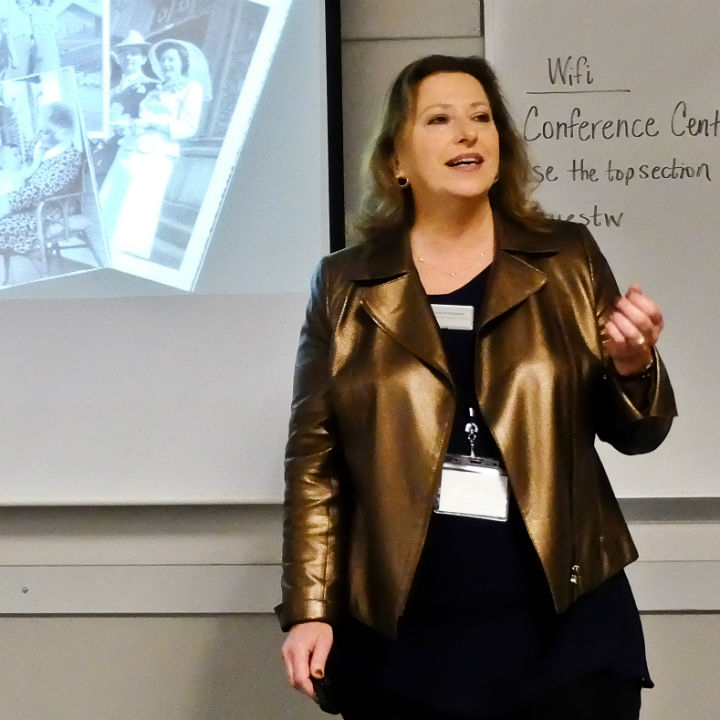
The daughter of two survivors, Naomi tells the stories of her parents from primary source documents and historical records.
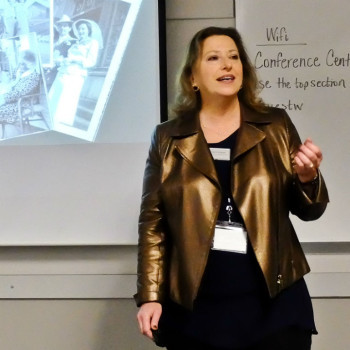
Naomi is the daughter of two Holocaust survivors. She tells the stories of both of her parents with details from primary source documents and historical records. Their survival is truly remarkable.
In 1938, Naomi’s father Eric Weiss, attended a rally in Vienna after the Germans occupied Austria. He sensed that he had to get his parents out of Vienna and escape himself. He arranged for his parents to take an Eastern escape route through Russia to Yokahama, Japan and finall y to Portland, Oregon. Eric’s acceptance to the Hebrew University allowed him to leave Germany for what was then Palestine under British rule (now Israel). While in Palestine, Eric was recruited to work for as a spy for the British and traveled to Egypt, Algiers, Tunisia, Libya, and Italy in that capacity. He served from 1939-1944.
Naomi’s mother, Gerda Feldmann, was born in 1923 in a small town in what is now the Czech Republic. The Germans invaded Czechoslovakia in 1939 when Gerda was 16. She was sent to a series of slave labor camps in Poland and was finally liberated by British forces at Bergen-Belsen. Gerda, ill with typhus, was sent by the Red Cross to Sweden to recuperate, and eventually she too arrived in Palestine.
Gerda and Eric met in Israel, but Eric left in 1950, traveling to Portland to reunite with his parents. Gerda followed and they were married in 1950. Naomi grew up in Portland hearing parts of these stories. Her mother died when Naomi was 17, but her father lived to be 100.
Naomi calls her story, “Resilience: My Family Story.” She gathered all the documents and pictures she could find, consulted with relatives, and researched many details of this story. Her hope, as one of the Holocaust Center’s Legacy Speakers, is to reach young people and help them to understand the way our lives can be threatened, and what each one of us can do to make a difference.
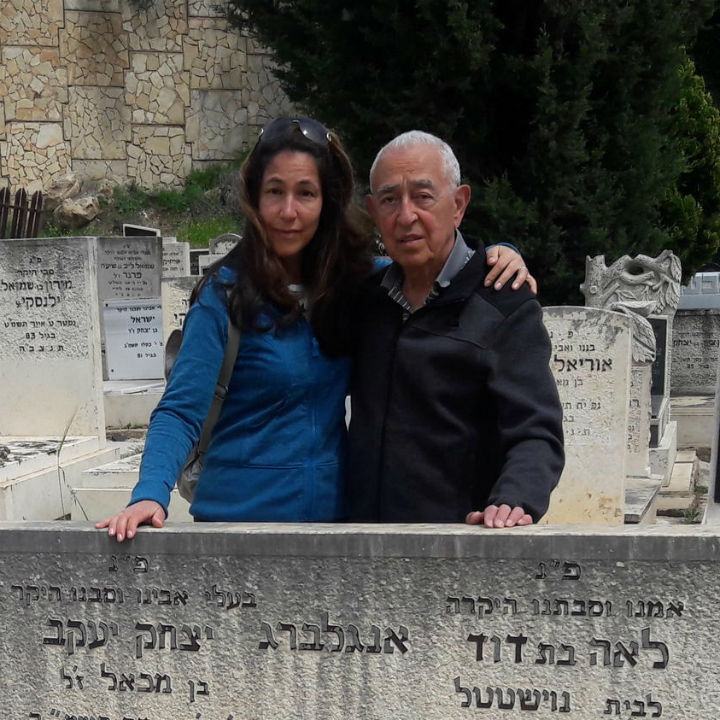
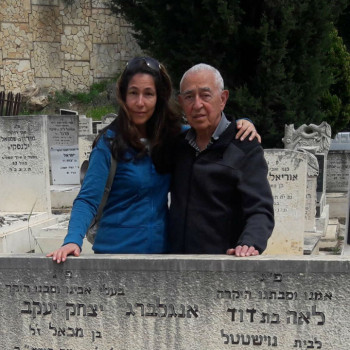 Michal’s father, Arieh Engelberg, was born in Tanobrezg, Poland in 1934. “I am the daughter of a Holocaust survivor. There are many and different Holocaust survivor stories. My family was expelled from their home town of Tarnobrezg, Poland where they had resided for generations. My family was expelled for one reason only – because they were Jewish. They were not alone. Thousands of Jews were expelled from Polish towns – where did they go? How did they know to go there? How did they survive? This is the story of my family.”
Michal’s father, Arieh Engelberg, was born in Tanobrezg, Poland in 1934. “I am the daughter of a Holocaust survivor. There are many and different Holocaust survivor stories. My family was expelled from their home town of Tarnobrezg, Poland where they had resided for generations. My family was expelled for one reason only – because they were Jewish. They were not alone. Thousands of Jews were expelled from Polish towns – where did they go? How did they know to go there? How did they survive? This is the story of my family.”
In 1939, when Arieh was only 5 years old, Germany invaded Poland. As part of the Molotov-Ribbentrop Pact, dividing Poland between Germany and the Soviet Union, Polish Jews living close to the dividing line with the Soviet Union in Poland were forced to leave their homes.
Arieh’s family decided that it would be safest to move east into the Soviet Union with the hope that they would be able to return to their home soon. Instead, they became part of a migrant group sent to various labor camps as far away as Siberia. When the war ended, they were loaded onto railcars and sent back to Poland. They applied for visas to Israel, which were granted in 1950.
The Engelberg family traveled over 12,000 miles between 1939 and 1950 escaping the Holocaust.
In Israel, Arieh served in the Israeli Defense Forces and became a mechanical engineer. He married Michal’s mother, Sarah, in 1964. In 1975 Arieh moved to Vancouver, BC, accepting a job as an off-shore and sub-sea engineer. In 1976 his wife and family joined him.
“My father’s family was propelled into a life they didn’t wish for and had no control over. With the help of the Holocaust Center for Humanity, my father’s oral and written testimonies and his school certificates, I was able to trace my family throughout the war. My father’s school certificates became important historical documents to unravel my family’s route as dictated by the communist regime.”
With primary sources, maps, and her father’s video testimony, Michal brings life to her family history.
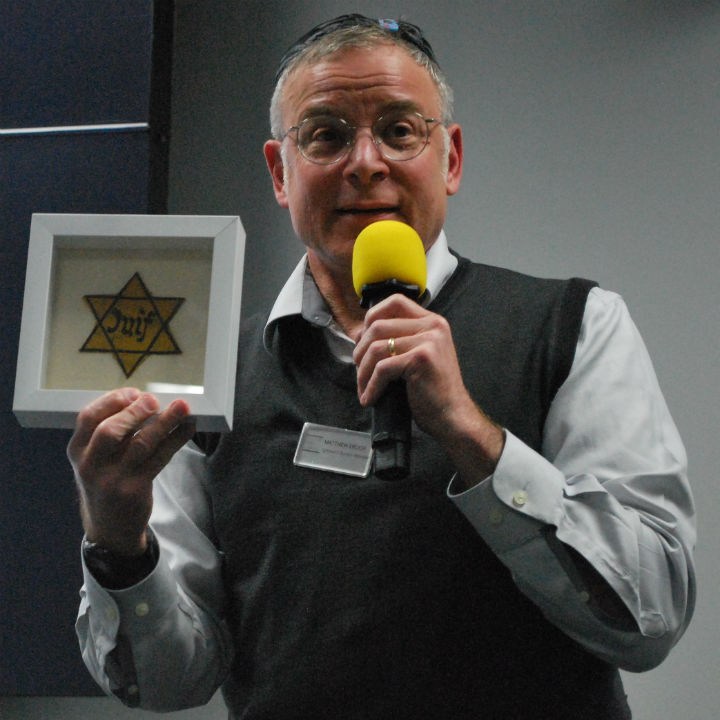
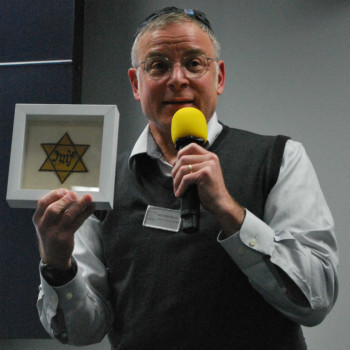 Matthew Erlich’s mother, Felicia Lewkowicz, was born in Krakow, Poland in 1923. Felicia was one of seven children, four girls and three boys.
Matthew Erlich’s mother, Felicia Lewkowicz, was born in Krakow, Poland in 1923. Felicia was one of seven children, four girls and three boys.
On March 3, 1941, the Nazis established the Krakow ghetto and Jews were required to wear armbands. Felicia and one brother were sent by the Nazis to the Krakow ghetto while her mother and other siblings were sent to Tarnow, 70 miles from Krakow. Conditions in the ghetto were terrible, with very little food and illness and diseases running rampant. Luckily, Felicia was able to get work outside the ghetto, cleaning the offices of German officers. One day, she did not return to the ghetto, escaping onto a train which would take her to Vienna, Austria. On the way, she stopped in Tarnow where she saw her family for the last time.
In Vienna, Felicia was able to acquire false identity papers and adopted the name Sophie Sterner. She worked at the Hess Hotel and the Hungarian King Hotel. Starting in the kitchen, she eventually worked her way up to housekeeping, assigned to the Hess family’s personal rooms. When a friend was caught smuggling clothes, a photo of Felicia was found among the clothes and she fled the hotel for fear of being caught.
Changing her name to Stephanie Heir, Felicia was able to find a position as a nanny and, later, at the Astoria Hotel. The authorities caught up with Felicia and she was sent to Auschwitz as a political prisoner.
Felici a arrived in Auschwitz in August of 1944 and was tattooed with the number A-25049. Shortly after her arrival, she was forced to give blood for German soldiers. To stop them from taking all her blood, a German nurse and fellow prisoner changed Felicia’s blood type on her records, and gave her bread and sausage to eat. Felicia attributes this act to helping her survive.
Felicia was transported with a group of 3,000 prisoners to Bergen-Belsen in October 1944. At the end of July 1944, there were 7,300 prisoners interned at Bergen-Belsen. By April 1945, this number had increased to 60,000. Overcrowding, poor sanitation, and lack of adequate food, water, and shelter led to an outbreak of disease. Tens of thousands perished in the first few months of 1945 and the bodies were often left in barracks for days before being removed. In March 1945, Felici a got Typhus. Her cousin, Estia, who she discovered on the transport to the camp with her, kept her alive by encouraging her to eat and get up.
Bergen-Belsen was liberated by the British on April 15, 1945. In May, Felicia and Estia were taken to a Displaced Persons (DP) camp in Lingen, Germany. In the camp, Felicia worked as a translator and met her future husband and fellow survivor, Arthur. After 6 or 7 months in the DP camp, Felicia moved to Paris, where her sister Lola was living, while Arthur completed his studies in England. Felicia and Arthur were married in England on July 3, 1948. They later moved to Canada and then the USA. The couple had four sons: Richard, Andrew, Michael, and Matthew.

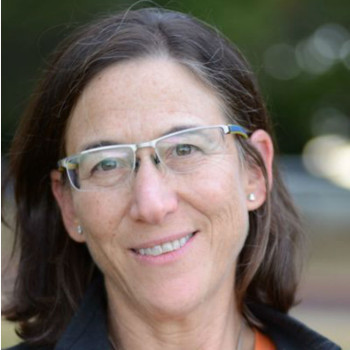 Karen Treiger shares the survival story of her mother- and father-in-law, Esther and Sam Goldberg. Karen knew that they had amazing stories of survival, but she wanted to fully understand their struggles and experiences and began to research their stories.
Karen Treiger shares the survival story of her mother- and father-in-law, Esther and Sam Goldberg. Karen knew that they had amazing stories of survival, but she wanted to fully understand their struggles and experiences and began to research their stories.
Esther and Sam both grew up in Poland prior to the outbreak of World War II. Sam was drafted into the Soviet Army and imprisoned in a German POW Camp. He escaped, but was eventually deported to the Nazi death camp Treblinka. In 1943, Sam escaped from Treblinka and found safety in a nearby forest, where he met Esther. Esther had already established a hiding place there after fleeing Stozeck, Poland.
Esther and Sam survived in hiding with the help of the non-Jewish Stys families. After the birth of their first child and several years in displaced persons camps, the Goldbergs came to the United States in 1949.
In 2016, Karen and her family traveled to Poland to meet the children of the Stys families, and thank them for their courage in saving the Goldbergs’ lives. This incredible connection has continued to inspire Karen to tell her family’s story, and now to share it with students and other groups as a Legacy Speaker for the Holocaust Center’s Speakers Bureau.
Karen Treiger's award-winning book, My Soul is Filled with Joy: A Holocaust Story, details the story of the Goldbergs and her own journey in uncovering this history. She is a lawyer and has four adult children with her husband – Sam and Esther’s son – and resides in Seattle.
